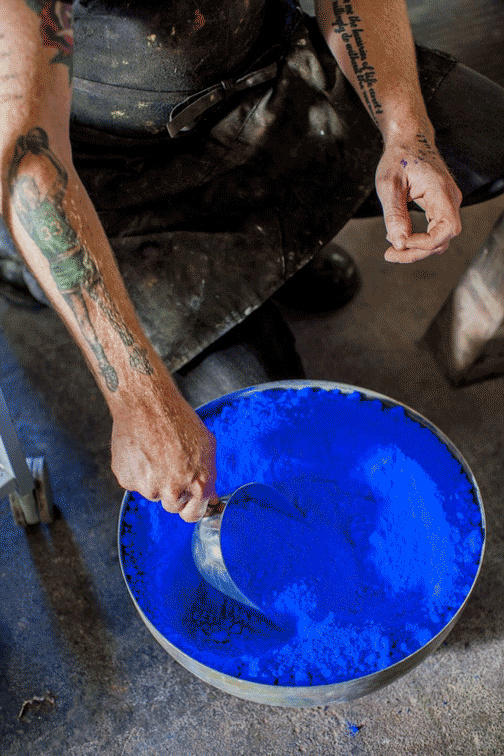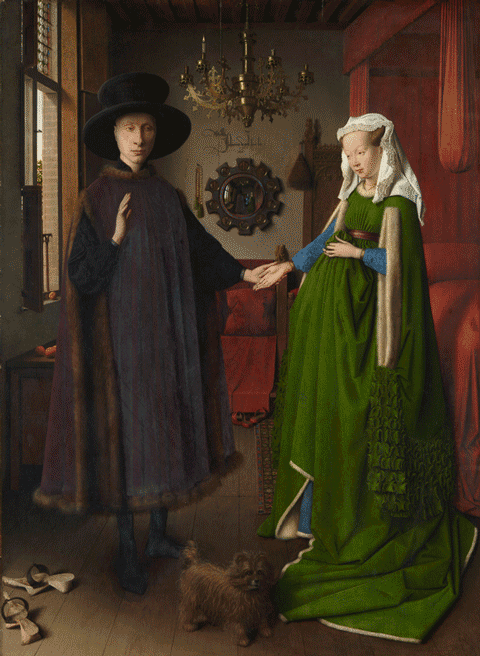Known for its versatility and archival properties oil, paint remains one of the most popular mediums among visual and fine artists today. Artists use oil paints to create opaque, transparent, and translucent paintings, with both matte and gloss finishes signifying an extensive range of possibilities. The flexibility with which one can apply oil paint, whether using natural or synthetic brushes, palette knives, or even cloths is a major advantage to the medium. While the use of oil paints affords so many creative possibilities, it was only in the 1800s that industrial manufactures began producing fine art oil paints. Before this, artists were responsible for developing their paints, no small task.
Simply put, oil paint consists of three things: pigment, binder, and thinner. Pigment is the material through which the paint derives its colour. The binder, also known as the oil, sticks to this pigment and enables the application of the pigment onto canvas or other such painting support. Often, linseed oil acts as the binder, though vegetable oils such as canola or olive oil can act as an alternative. As pigments can be adhered with incredibly small quantities of oil, the artist is able to push these dense pastes around their work, providing a physical quality that can be missed when using other mediums. Lastly, thinner increases the paint’s fluidity allowing for smooth application.

Straight out of the tube, oil paint is typically at its most stable point. Artists often work to achieve a smooth texture, and oil paint can be made more fluid by adding solvents. Being incredibly flexible, the medium permits both impasto and fine detail work with a wide range of possible brushstrokes. Oil paint is slow to dry as it dries through oxidation, which means that it can be worked while still wet for a number of weeks before it fully dries. This generous time frame gives artists more time to create soft, seamless shadows. In comparison, egg tempera, the traditional medium used for panel painting in Southern Europe dried quickly, creating light tones.
Around 1500, oil paint replaced egg tempera as the primary painting medium and by the end of the 16th century, Venetian artists were skilled in the crafts and techniques of oil painting. This timeline reflects the adoption of oil painting near the end of the Roman Empire. At this point, an artist would use olive oil as the binding agent, though this oil lent a lengthier drying time. In Japan, painters would use perilla oil though this, unfortunately, was the cause of discolouration. Finally, Jan van Eyck, a Flemish painter, made significant progress in the development of a stable binder. While he kept this recipe a secret until 1440, we now know that it involved ground glass, calcined bones, and select mineral pigments. These mineral pigments were suspended in linseed oil boiled for weeks. As we know it today, oil paint is made by creating a paste of dry powder pigments and refined linseed oil, not unlike van Eyck’s original recipe. While van Eyck introduced the world to this new formula, it is worth noting that he is often incorrectly credited with the invention of oil painting. Records from as early as the 7th century indicate artists used oil from walnuts or poppies to decorate the ancient cave complex in Afghanistan disproves this theory, as does the 11th century use of oil paint across Europe.
Through the Flemish technique, van Eyck shares how to appropriately use this recipe for paint. The Flemish technique allows for greater brilliance and colour intensity and boasts strong archival qualities. This superior handling of the medium by van Eyck and others such as Rogier van der Weyden in the 15th century is largely what drove the medium to become the primary mode of painting in 16th century Europe. Netherlandish painting had the ability to explore, with brilliant colour, incomparable realism showcasing the versatility of the medium. This brilliance is seen in van Eyck’s Arnolfini Portrait, through the application of many layers of oil paint to create such rich reds and greens. This Netherlandish handling of oil paint was brought to artists’ attention in Southern Europe through their travel, speaking with contacts in the Netherland to gain information, and looking at paintings brought in from abroad. Later in the 15th and early 16th centuries, oil painting in the North became more economical. While the oil itself was relatively inexpensive, pigments were more costly. Ultramarine, gold, and red were among the most expensive pigments.

The Impressionist period in the late nineteenth century changed the entire field. For the first time, artists were able to bring their oil paints outdoors as pigments were now widely produced tubes. Painting wet on wet allowed for mixing directly on the painting support allowing for quicker application.
